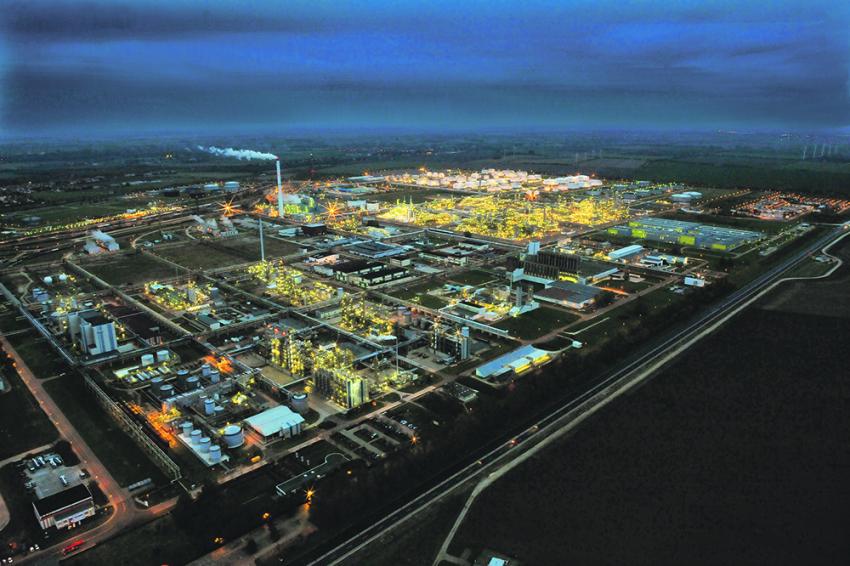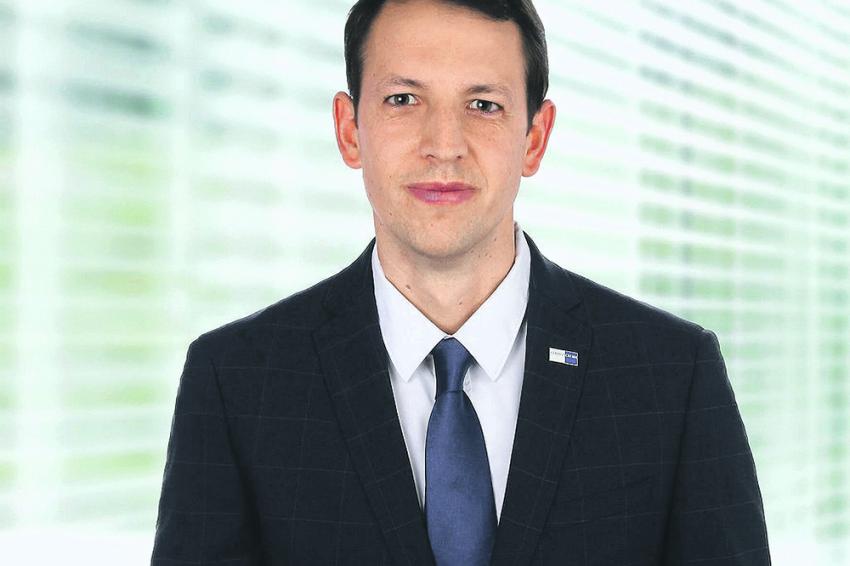The Chemical and Pharmaceutical Industry in Eastern Germany
A Network of Chemical Parks Offers Companies the Opportunity to Grow
The chemical industry is one of the most important in Eastern Germany and, about 30 years after German reunification, is now viewed as a showcase sector. However, it would have been impossible to predict this in 1990. The number of employees fell to rock bottom at 40,000 after the fall of the Berlin Wall — due to the structural switch from a planned to a market economy — but since this time the number has been constantly increasing.
“The chemical and pharmaceutical industry in Eastern Germany is in a very strong position nowadays. Many small and medium-sized enterprises have emerged from the huge industrial combines that were uncompetitive, and they now form the backbone of the chemical industry in the east. A large number of companies have taken root and are very successful with their products around the world,” says Nora Schmidt-Kesseler, managing director of the North-East Chemical Associations.
The chemical and pharmaceutical industry in Eastern Germany involves the five federal states of Brandenburg, Mecklenburg-Vorpommern, Saxony, Saxony-Anhalt and Thuringia as well as the city state of Berlin. The companies based there, which employ about 57,000 people, generated turnover amounting to €26 billion in 2018 — about 12% of the overall German turnover in the sector. The Eastern German chemical industry focuses on producing special chemicals. The proportion in this segment is slightly higher than the average figure for the whole of Germany. The share of the pharmaceutical business in the east is also about 4% higher than the average figure for the whole country. In terms of chemical exports, the north-east region is sixth in the federal state rankings. Saxony-Anhalt is, however, the largest chemicals exporter in the region and Europe is the most important export destination, accounting for more than 60% of products that are shipped.
Chemical Parks Form the Sector’s Heart
The chemical parks — which are an Eastern German development, by the way — form the heart of the sector and two of the ten largest chemical sites in Europe are located in Eastern Germany — at Bitterfeld-Wolfen and Leuna. The Bitterfeld-Wolfen chemical park covers an area measuring about 1,200 hectares and is situated in the Central German chemical triangle in the Halle/Leipzig business region. The Leuna chemical park is even 100 hectares larger than the site in Bitterfeld-Wolfen and is also Europe’s eighth-largest chemicals base. It is about 40 minutes away from Leipzig and Halle/Saale by car. The site, which measures 1,300 hectares overall, produces about 12 million tons of goods every year.
More than 600 companies have established business operations at the six Eastern German chemical parks since the mid-1990s. Most of them are small and medium-sized enterprises focusing on production and services. Then there are large corporations from Germany and abroad, which have built new production sites in Eastern Germany. BASF has a centre in Brandenburg (Schwarzheide), Bayer in Berlin, Saxony-Anhalt (Bitterfeld-Wolfen) and Thuringia (Jena) or Dow Chemical with an olefins network involving business sites in Saxony-Anhalt (Schkopau) and Saxony (Böhlen).
Synergy Effects between Business Sites
One of the key features of the highly specialized chemical parks is their close connection with the broadly-based academic world in Central Germany. However, the chemical parks are also closely linked to each other and this has created synergy effects. CeChemNet forms the network of chemical firms and site companies. The network pools skills and expertise in the field of chemical park management, coordinates the ongoing exchange between the worlds of business, academia and politics and provides supports for marketing the chemical park areas in close cooperation with the business development corporations at federal and state level. The following companies belong to the network: Chemiepark Bitterfeld-Wolfen, InfraLeuna, Dow Olefinverbund, Infra-Zeitz Servicegesellschaft and BASF Schwarzheide. The partnership is completed by the involvement of the North-East Chemical Associations.
The generous space that is still available for companies to set up business operations and expand their production is another major advantage of the chemical parks in Eastern Germany. The infrastructure, which is geared towards chemical production, enables chemical companies to focus on their core skills. Well-developed and complex material networks — both at individual sites and at different locations — provide companies with many opportunities to become an integral part of regional value-added chains.
Pioneers in Hydrogen Liquefaction
Providing supplies of hydrogen is just one example of the pioneer role being played by the Eastern German chemical sector in new technologies. It is worth looking at the situation in Leuna. The site is increasingly becoming the European center for hydrogen liquefaction. There are currently three hydrogen liquefaction facilities operating in Europe — one of them at Leuna. Linde started constructing another extremely modern facility at the end of October 2019 and it is due to go into service as early as 2021. Linde will double its liquefaction capacity at the site with this new plant, which will be the most modern of its kind in Europe. It will soon be able to produce up to ten tons of liquid hydrogen per day instead of five up to now. Both facilities are currently supplied with the gaseous raw product via a pipeline from the hydrogen production units nearby. It will be possible to process “green” hydrogen from the planned “experimental laboratory” at Leuna in future too and this will be used to supply hydrogen fuel stations.
Saxony-Anhalt’s State Premier, Reiner Haseloff, held a spade too during the ground-breaking ceremony to mark the official start of the building work. This support represents the broad, cross-party backing from politicians for the chemical and pharmaceutical industry in Eastern Germany. Cooperation during the last few decades has created the conditions to ensure an ideal environment to attract new businesses and continue developing the infrastructure. What is more, the local population has a favorable outlook, particularly towards the chemical industry.
Attractive Working Conditions
The attractiveness of work in the Eastern German chemical sector is increasing all the time — partly through innovative wage agreements that envisage flexible working hours; they are unique in Germany. “This is extremely important for the current generation — not just the pay,” says Schmidt-Kesseler and points to the so-called “Potsdam model”, e. g., which has been negotiated with the IG BCE trade union.
However, one of the greatest challenges facing the Eastern German chemical industry involves finding qualified workers. The process of demographic change is particularly affecting the companies in Eastern Germany, as the number of people in work in the Eastern German non-city states will decline by about 30% in relation to the population by 2060, according to a study by the Dresden Ifo Institute. The industry is therefore making huge efforts and is already starting to use events in nursery schools and other schools, e.g., to create enthusiasm for chemicals in the young generation.
Contact
Arbeitgeberverband<Nordostchemie e.V.
Hallerstr. 6
10587 Berlin







